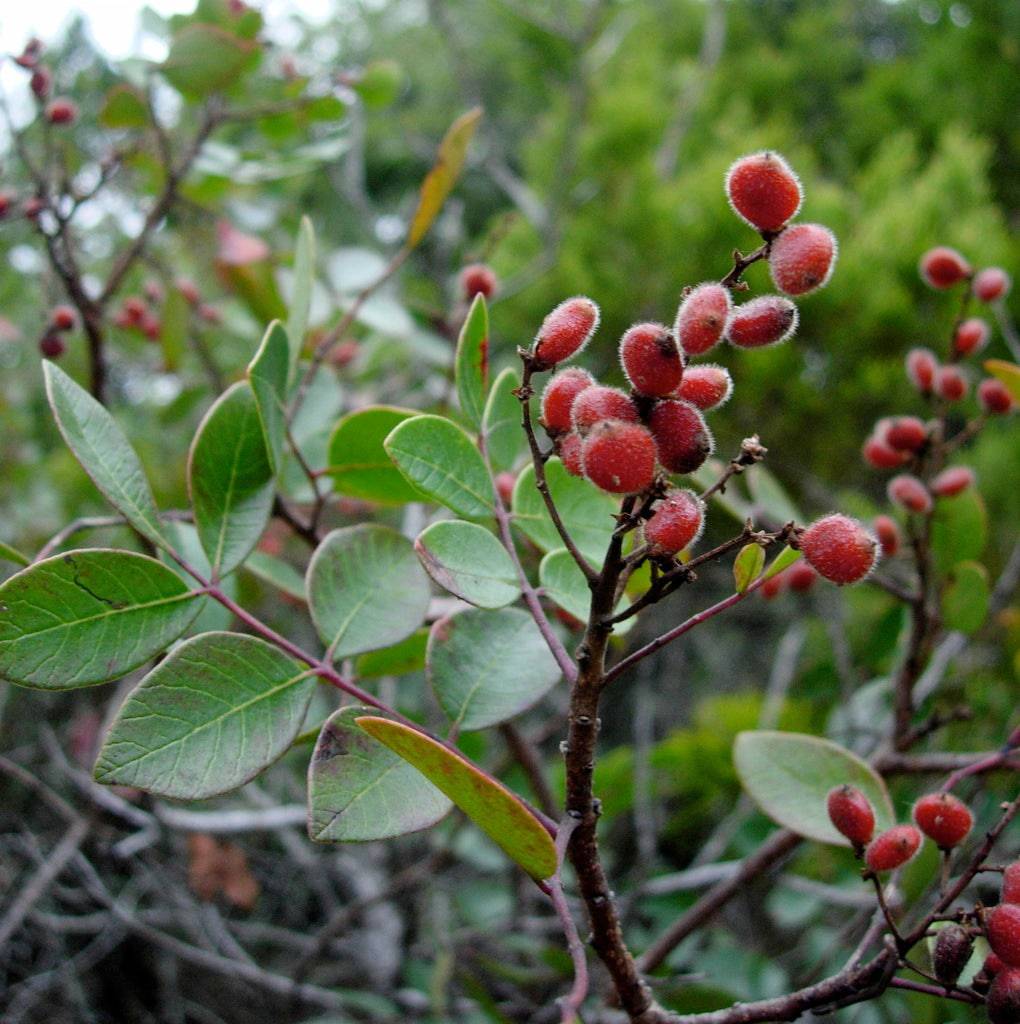Viburnum rufidulum, also known as southern black haw, rusty black haw, or rusty nannyberry, is a deciduous, suckering shrub or small tree that grows 10-20' tall. The plant is native to Virginia, Florida, Kansas, and Texas, where it usually grows in rocky or dry woods, valleys, rocky meadows, thickets, and along streams. Leaves are dark green and glossy with ovate to obovate shapes. Rusty brown hairs cover the undersides of the leaves, buds, and young stems.
In spring, tiny white flowers bloom in showy rounded cymes. The flowers are followed by clusters of elliptic, edible, dark blue berries that ripen from September to October. Various birds are attracted to the fruit. In the fall, the foliage turns a reddish-purple color. Unlike its similar cousin (V. prunifolium), southern black haw has glossy green leaves and brown hairs.
Grows well on average, dry to medium, well-drained loams in full sun to part shade. Plants generally grow denser in full sun, but in North Texas, will appreciate some light shade. More than one plant should be used to facilitate proper pollination necessary for abundant fruit production. Promptly remove root suckers to prevent colonial spread unless naturalization is desired.






























